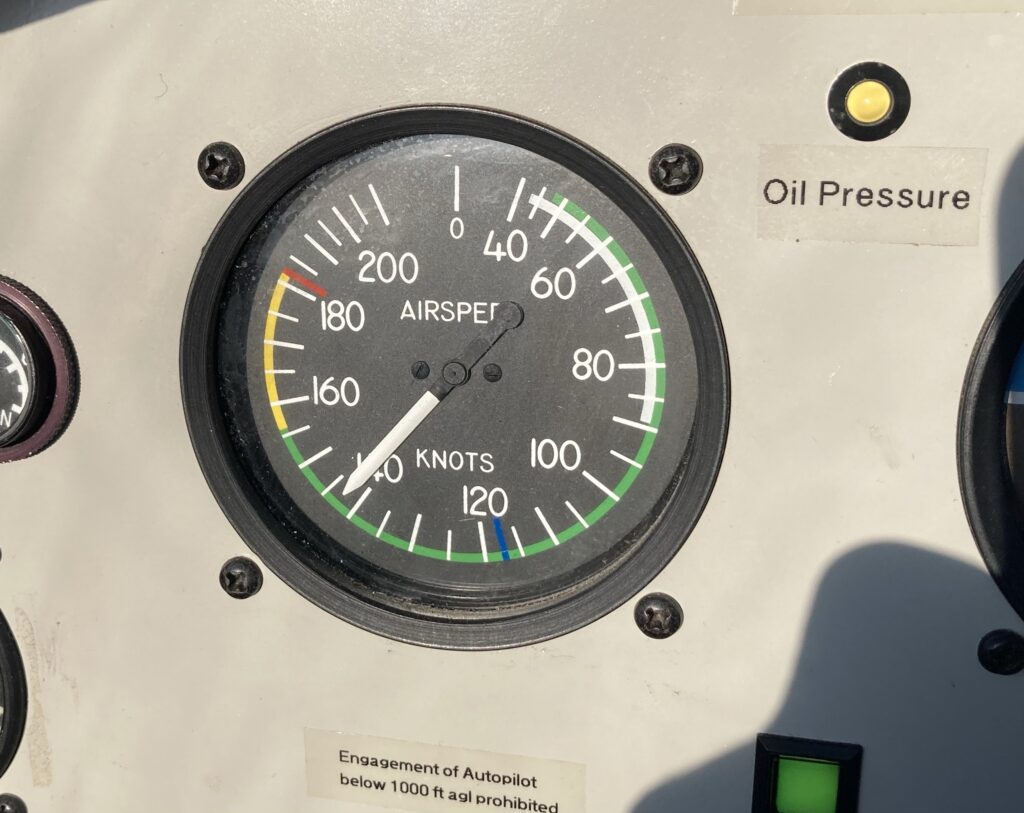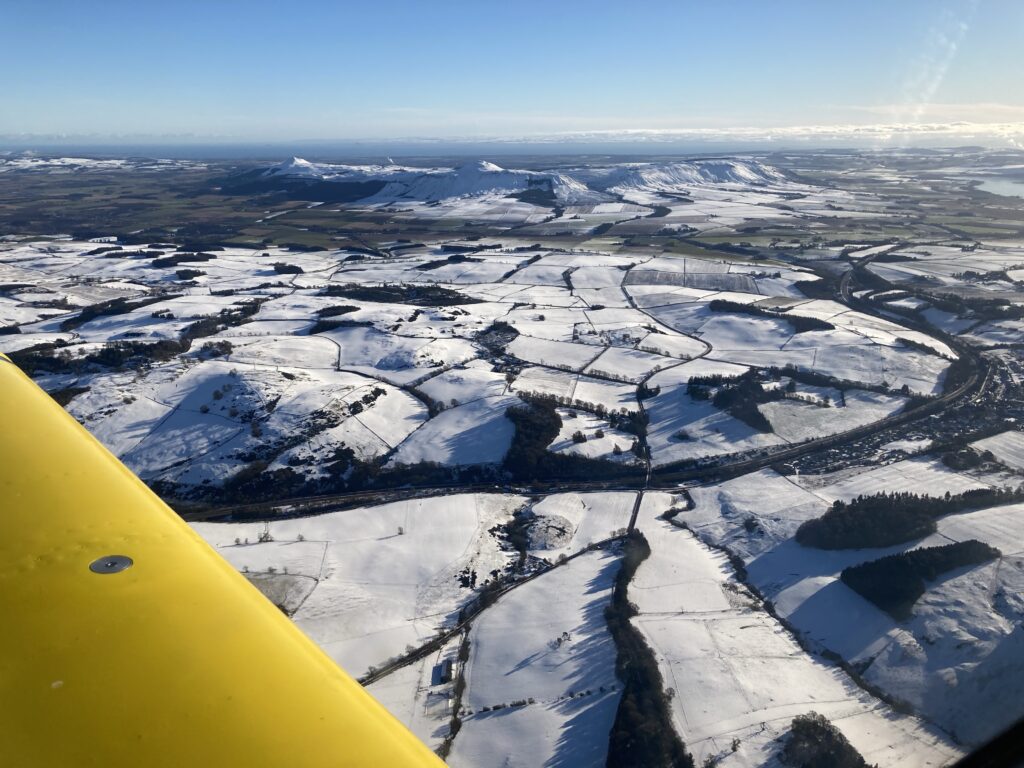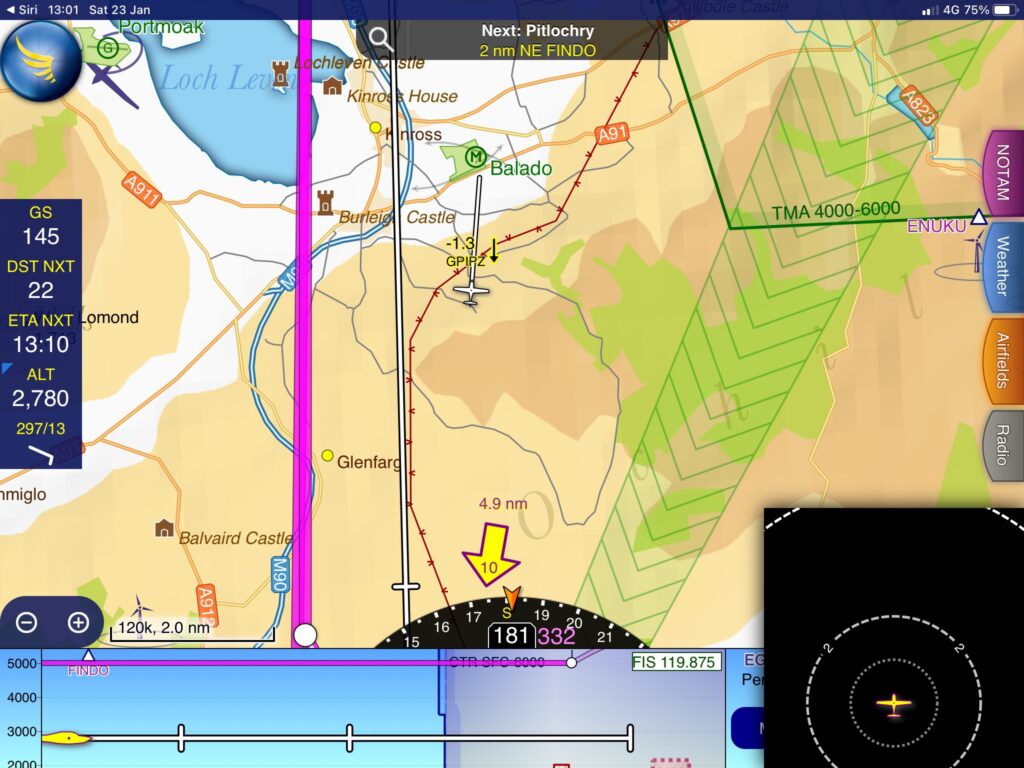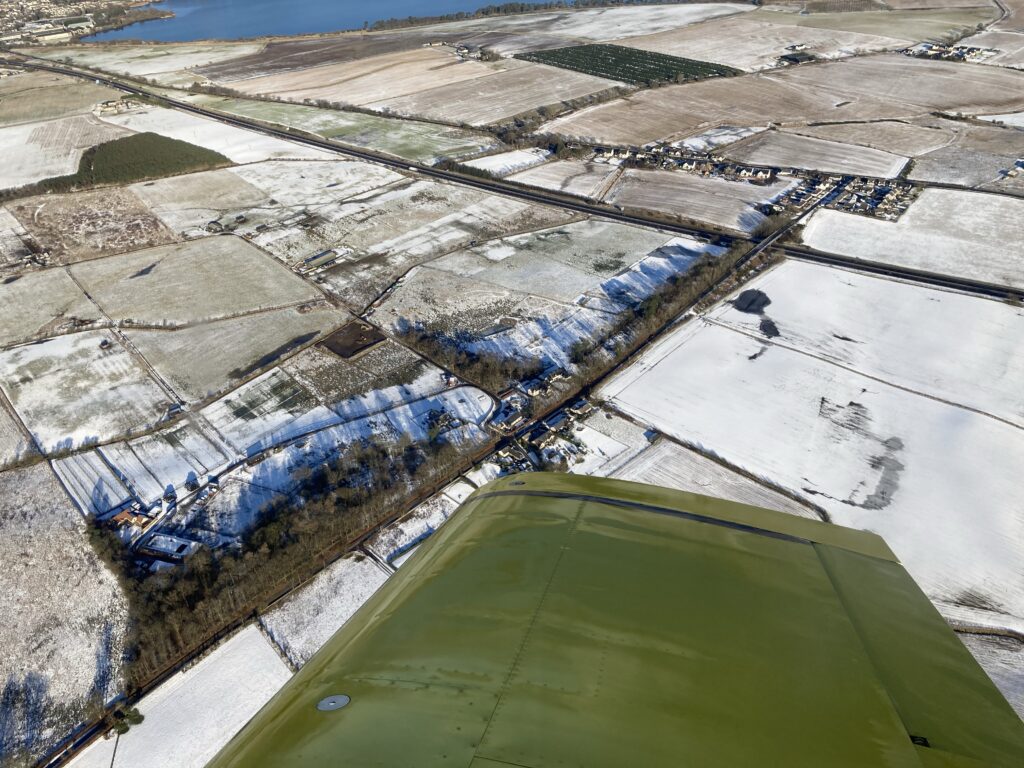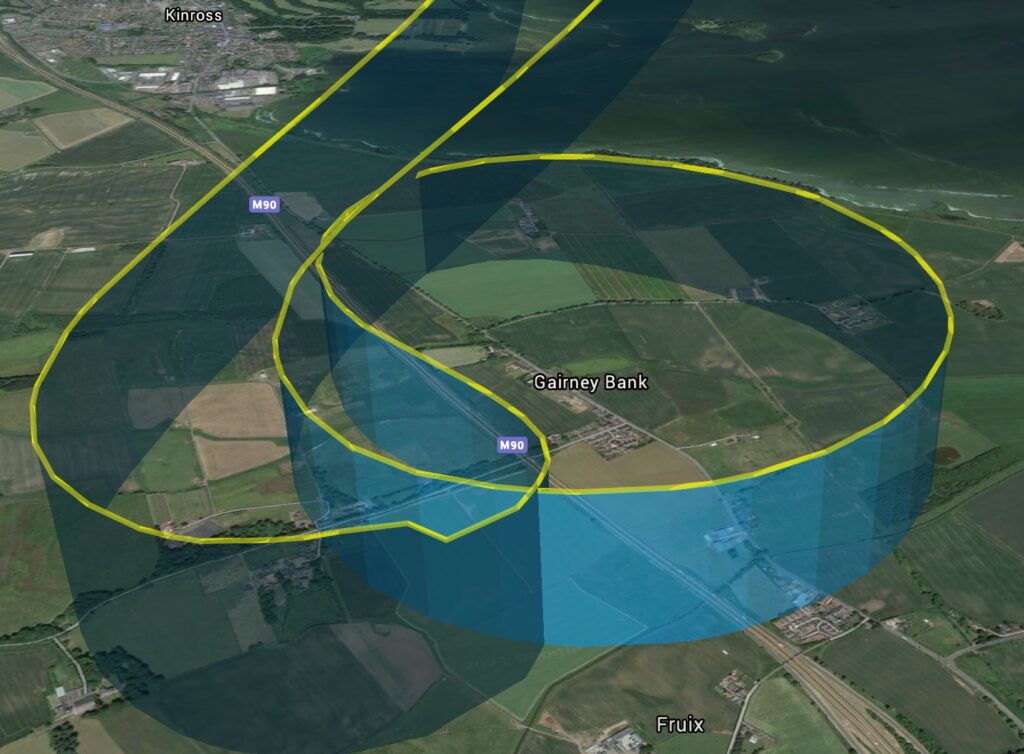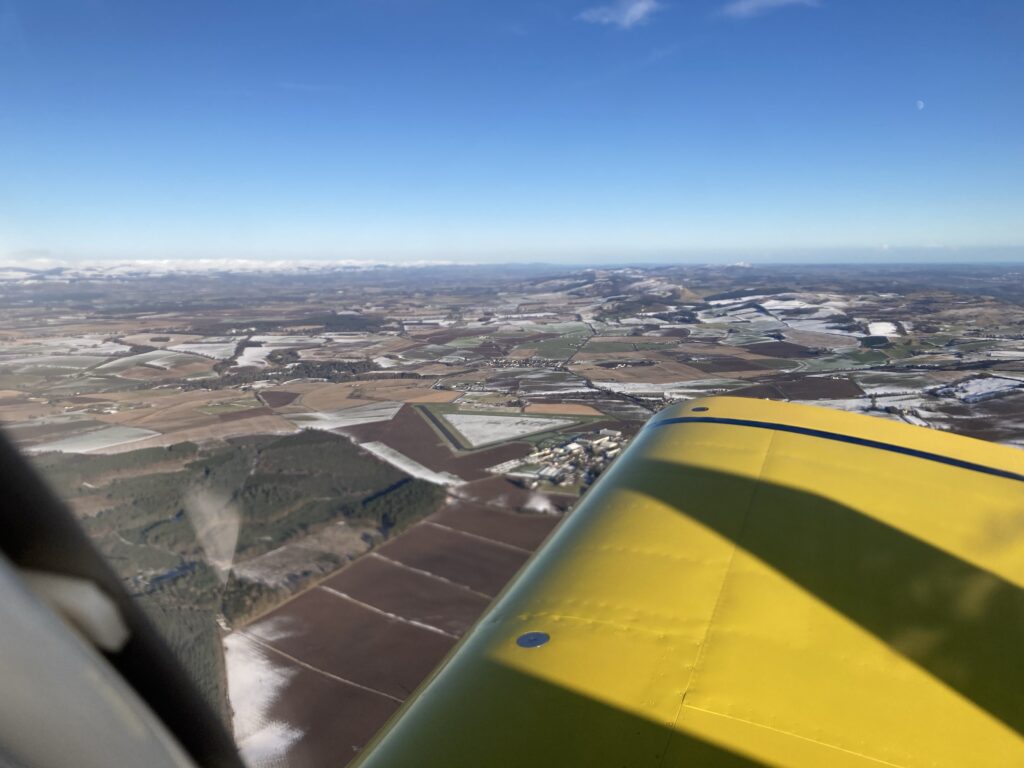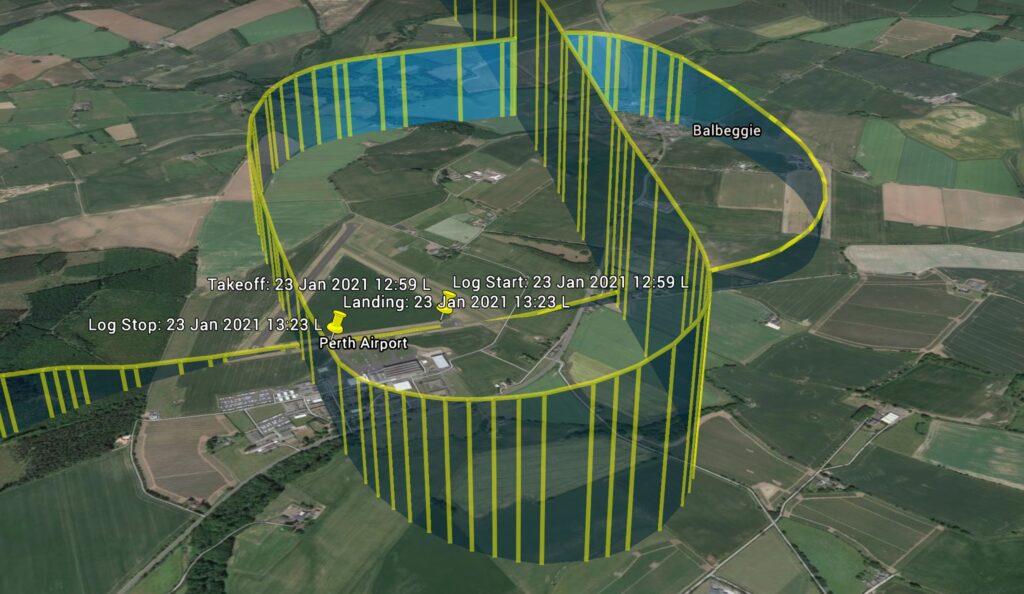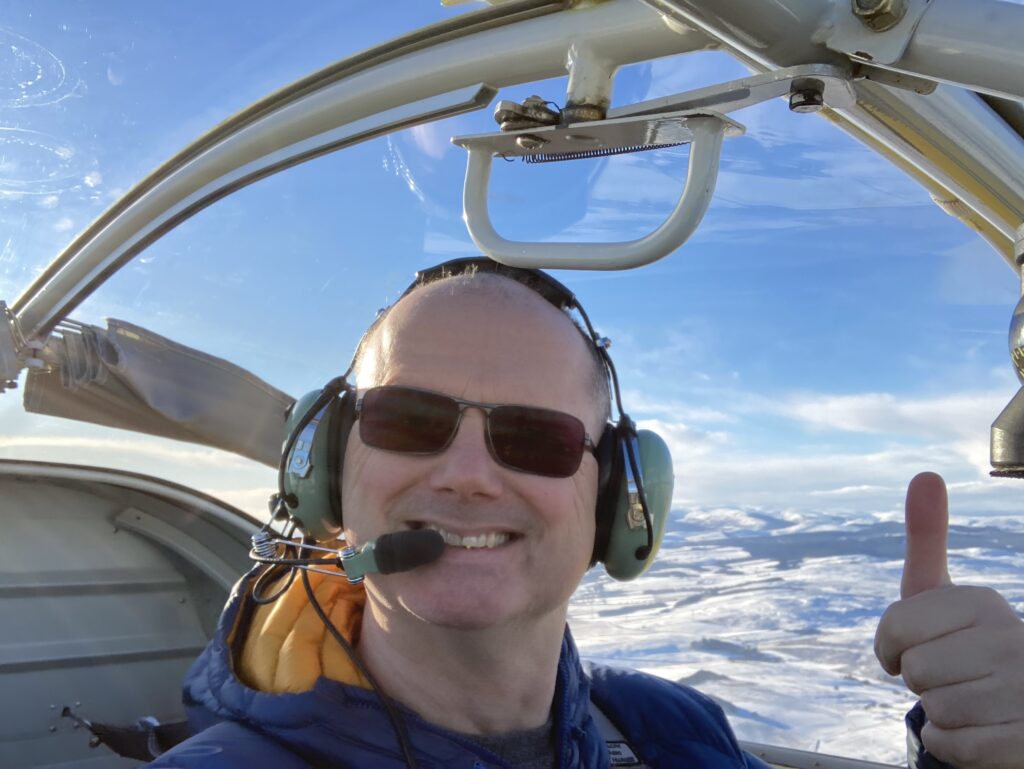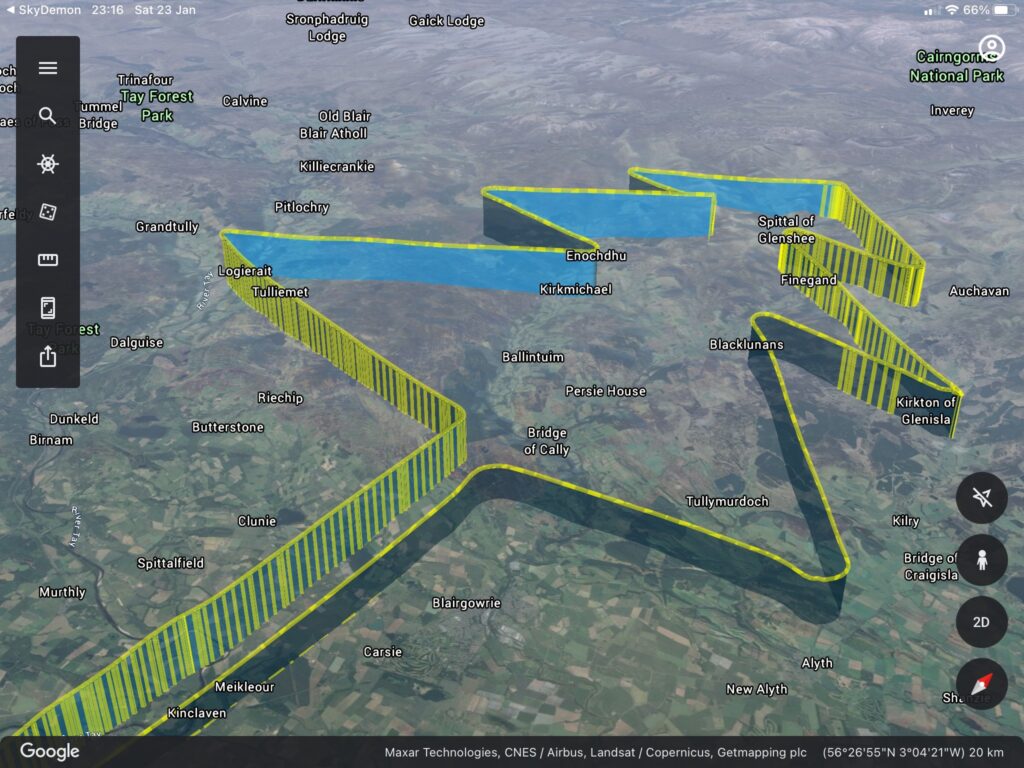Also known as “Engine Health (2)” – this time it was the Cub’s turn. It can be a bit of a pain as the aircraft is tucked away in the hangar behind a Cessna 182 which takes a bit of muscle power to move out of the way:
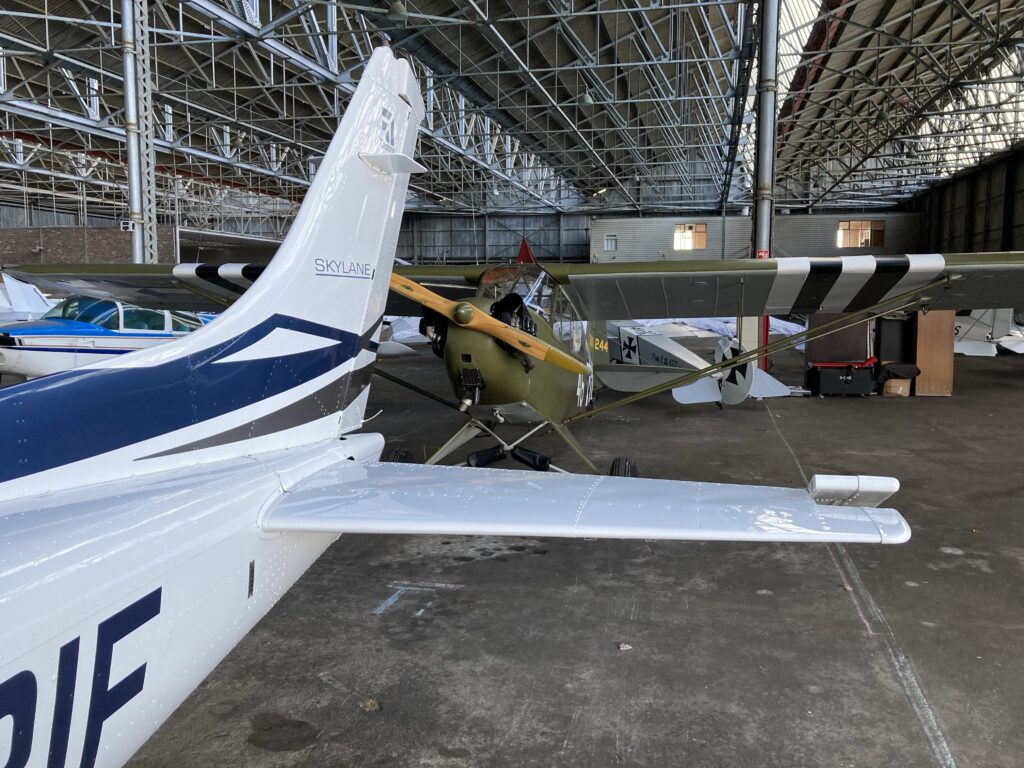
Fortunately there were a few others at the hangar that day and we helped each other wheel our aircraft out onto the icy apron. It was so cold that Robert had a hairdryer in the RV9A’s engine compartment to pre-warm the oil; I had refitted the Cub’s battery after charging at home in order to have as much power as possible to help get the engine started.
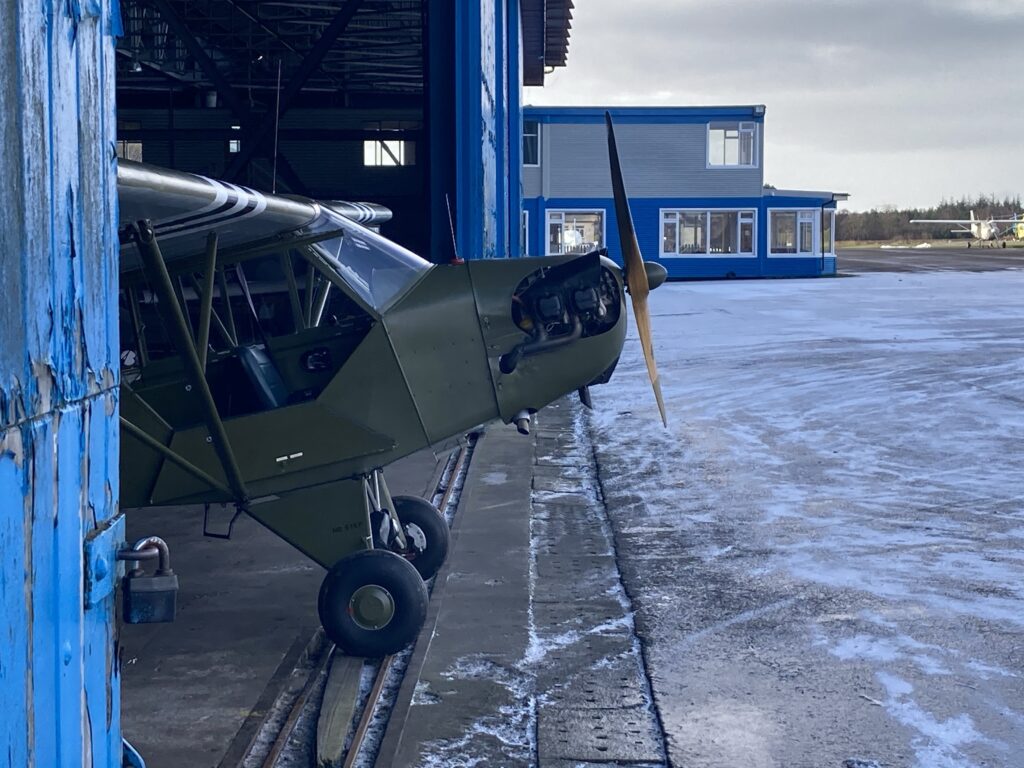
The Cub came out with its nose in the air, almost like it was saying “This is nothing, you should have seen winter ’44! Let’s go!” – but then it was reluctant to start. Eventually after a secret combination of primer, mixture setting and throttle position I got it started. I say secret because I have forgotten what I did, and I’ll have to experiment all over again next time. Maybe I’ll just put a hair dryer in the engine compartment to pre-warm the engine? It worked for Robert.
Soon we were off and heading northwest to follow the A9 for a bit:
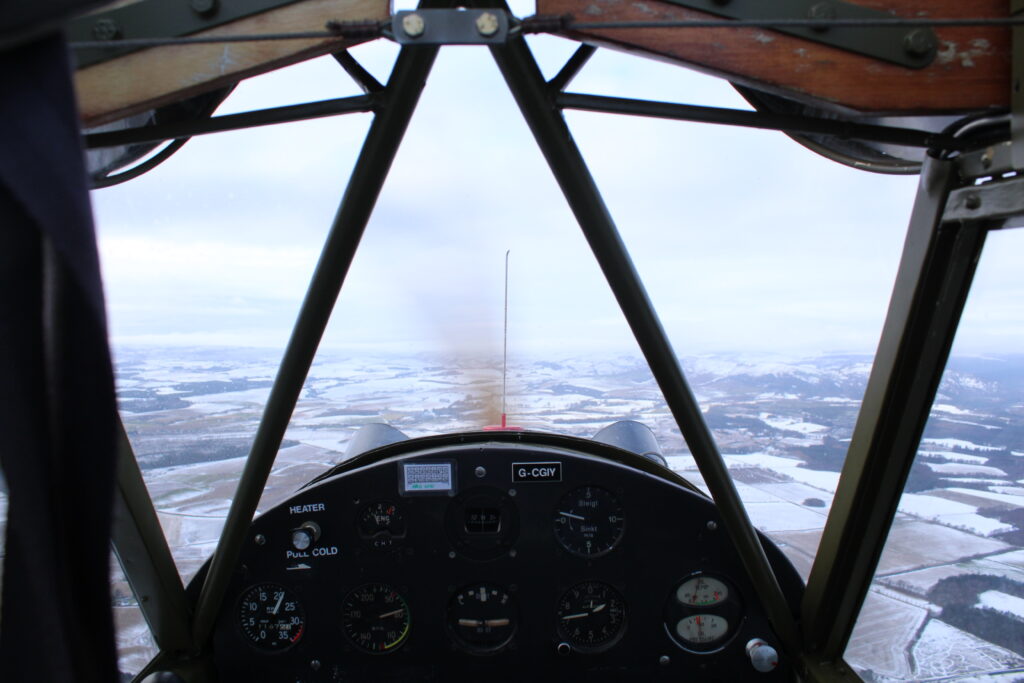
In the lower parts of Perthshire there was not too much snow lying around:
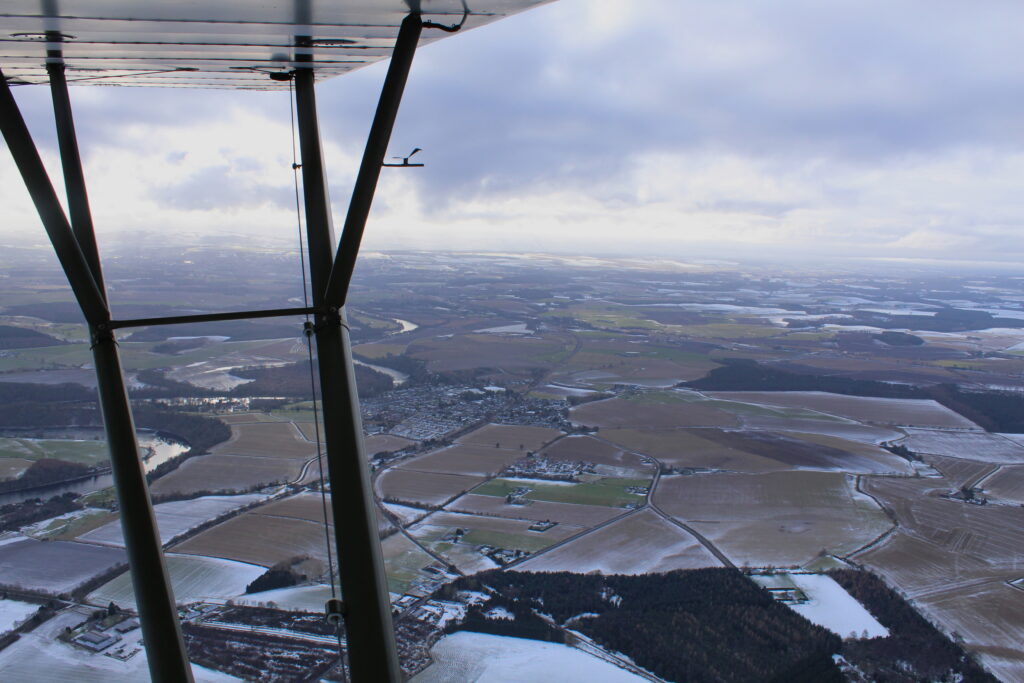
But the further north we travelled the whiter the ground became…
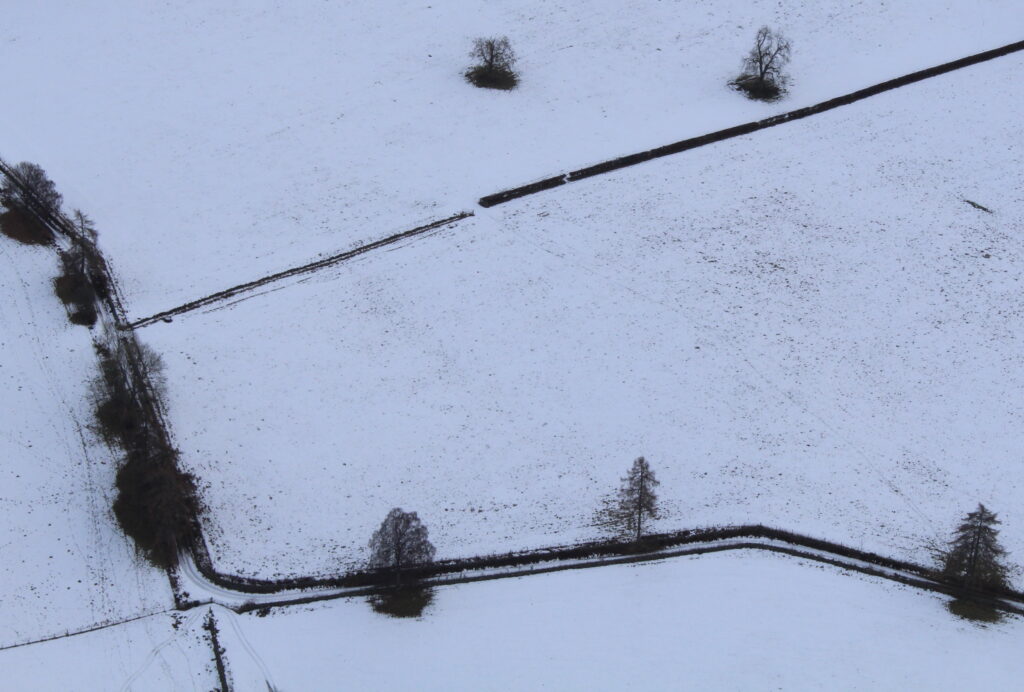
Northwest of Bankfoot there was some low cloud around. It felt a bit like that scene from “The Battle of the Bulge” movie where the spotter aircraft was looking for enemy forces in the fog. No Tigers spotted here:
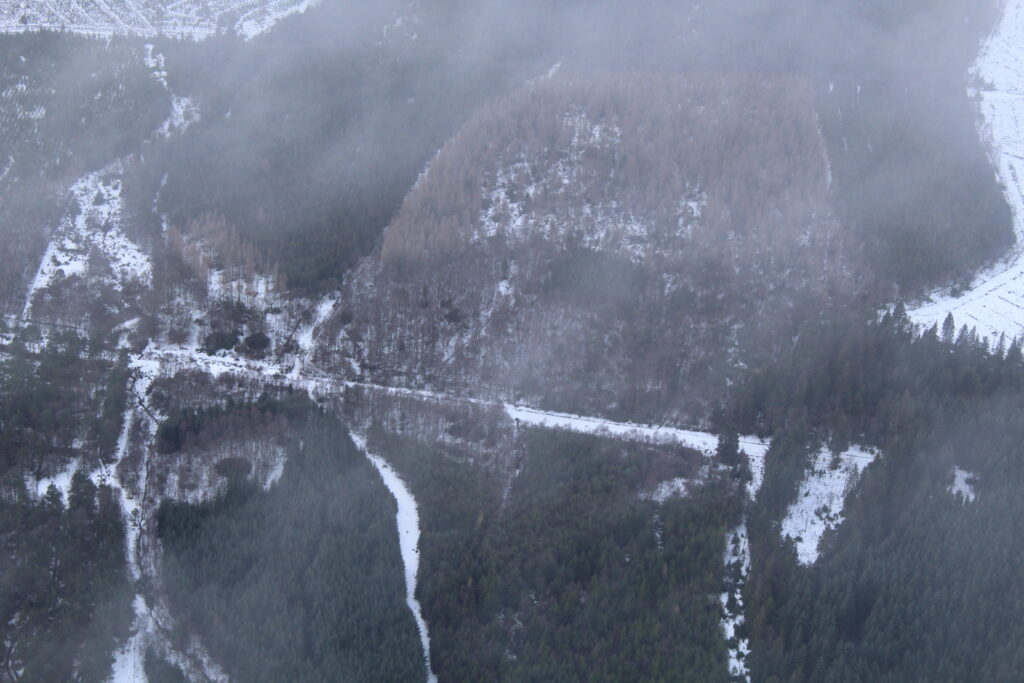
What unseen enemy forces lurk in this little Belgian village? Are those tank tracks coming out towards the woods?
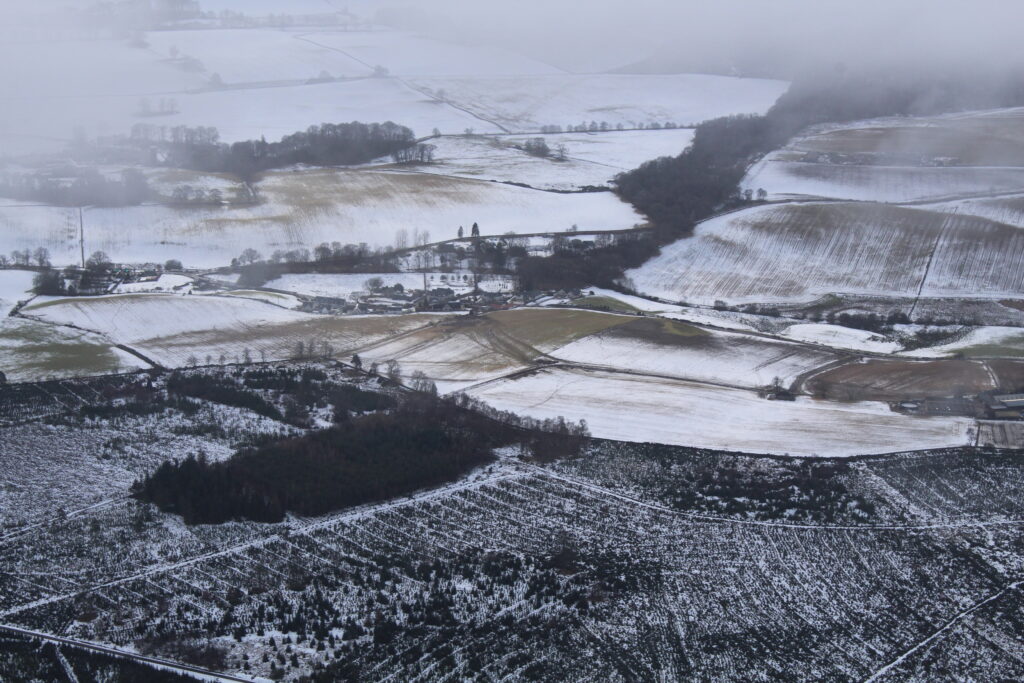
Vehicle tracks and shell craters in this field?
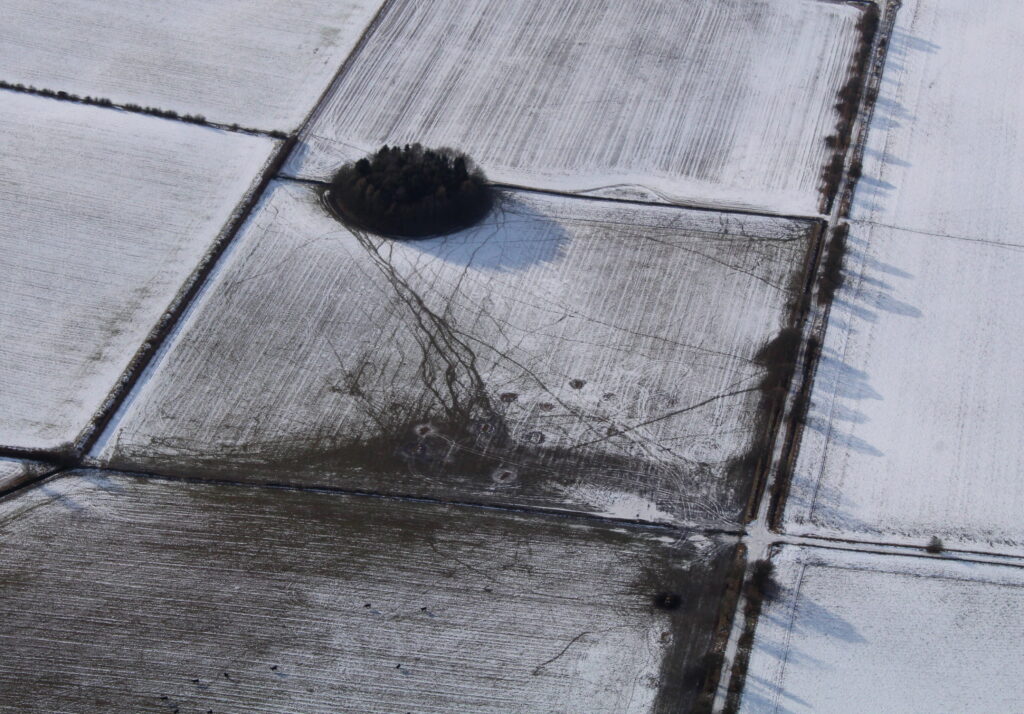
Since we didn’t see any enemy, we flew up the A9 to the Dalguise area before turning back southwards. For the non-aviators reading this, IFR should stand for Instrument Flight Rules, like airliners way up high, using beacons, waypoints and designated routes to get where they are going under the watchful eye of Air Traffic Control.
In the case of the Cub, IFR stands for I Follow Railways. Here we are following the Inverness to Perth line, with the A9 trunk road and the River Tay running along the valley as well.
IFR = I Follow Roads / Rivers / Railways (delete as applicable)
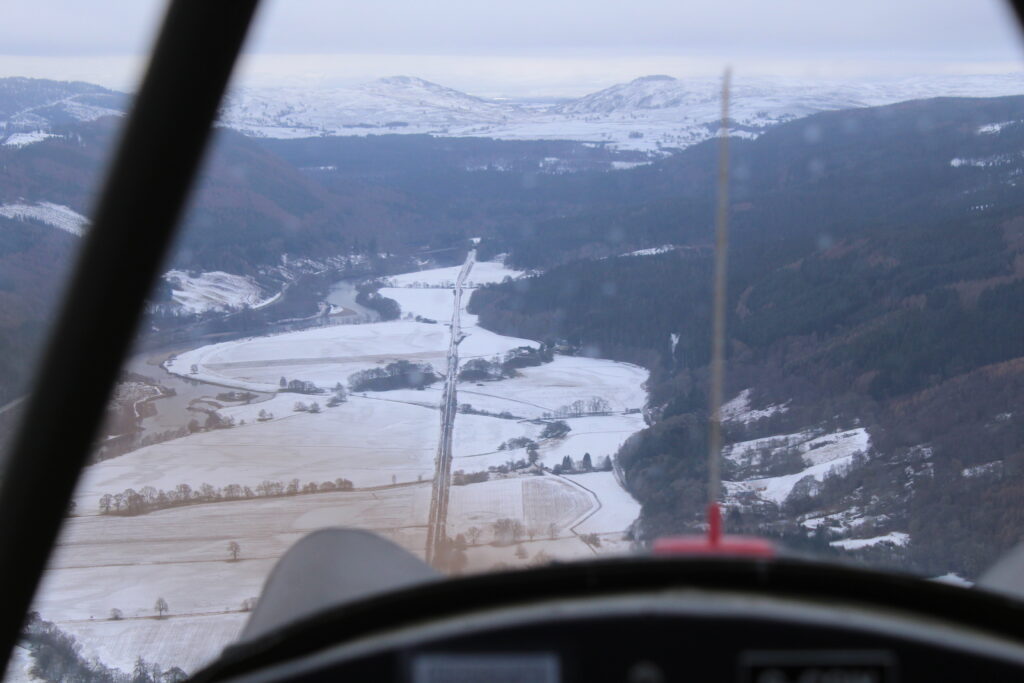
That old IFR joke has been around since Pontius was a pilot. So has the Pontius one…
Here’s Dunkeld from the north:
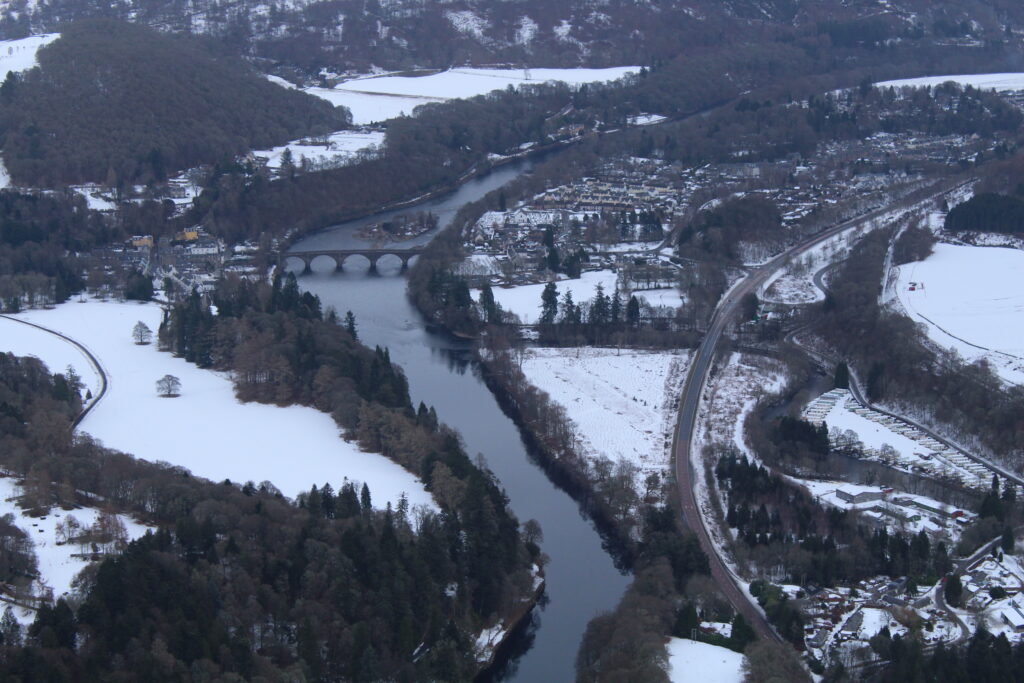
After Dunkeld we wandered all over the countryside with the window open taking photos. There will be another picture post soon with the best of those.
After 50 minutes the weather was slowly starting to deteriorate so it was time to head back to the barn…
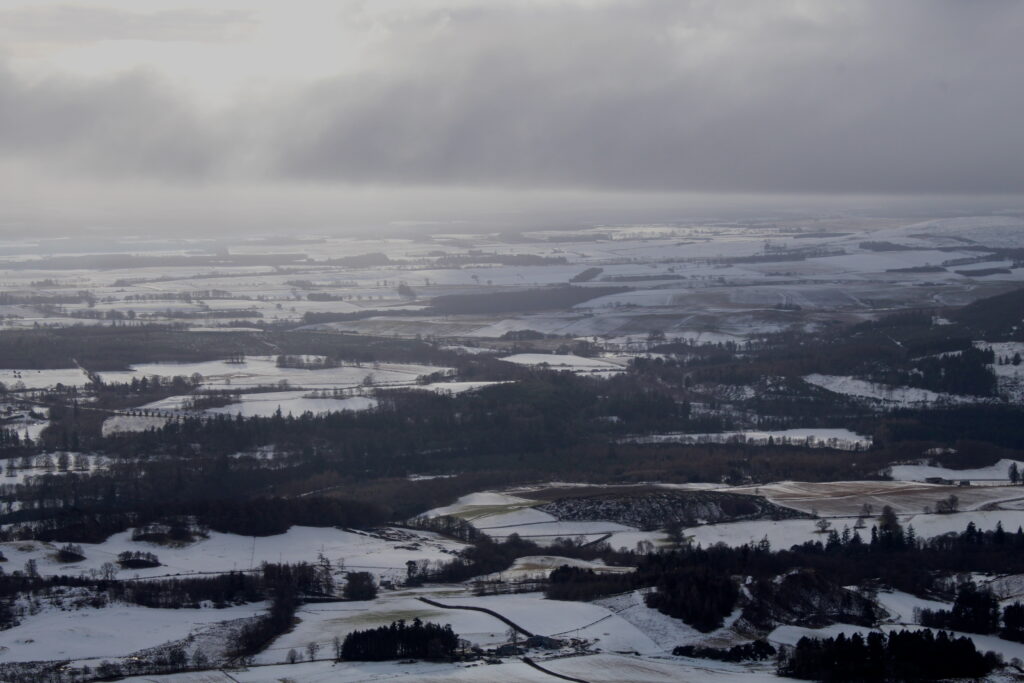
Engine run and oil warmed up, photos taken and pilot frozen…mission accomplished!
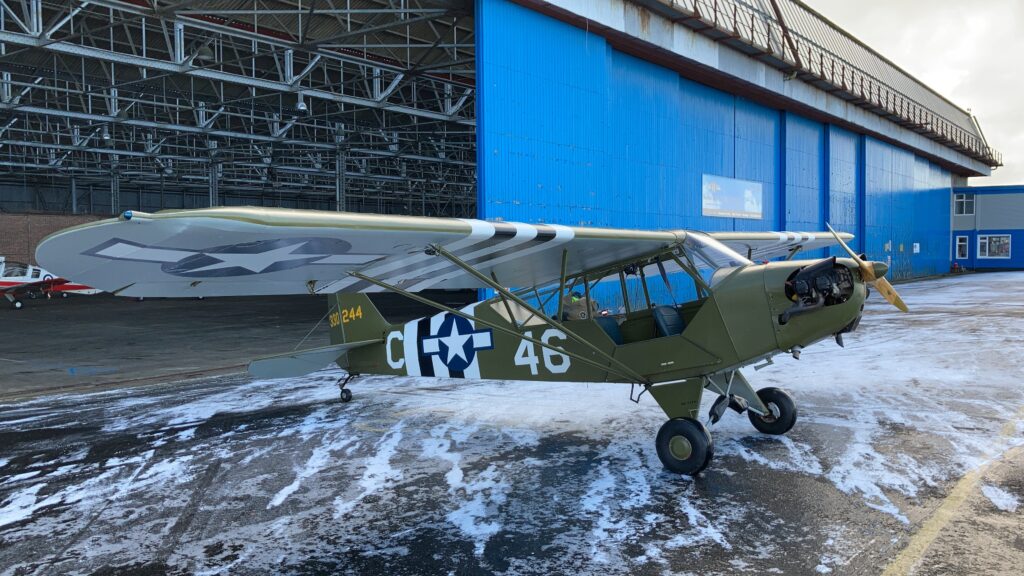
Can’t wait for more normal times and warmer weather and longer adventures. In the meantime, we can dream. The Buck brothers flew a Cub all the way from New Jersey to California when they were 17 and 15 – Flight of Passage is the story of that trip, and much more.
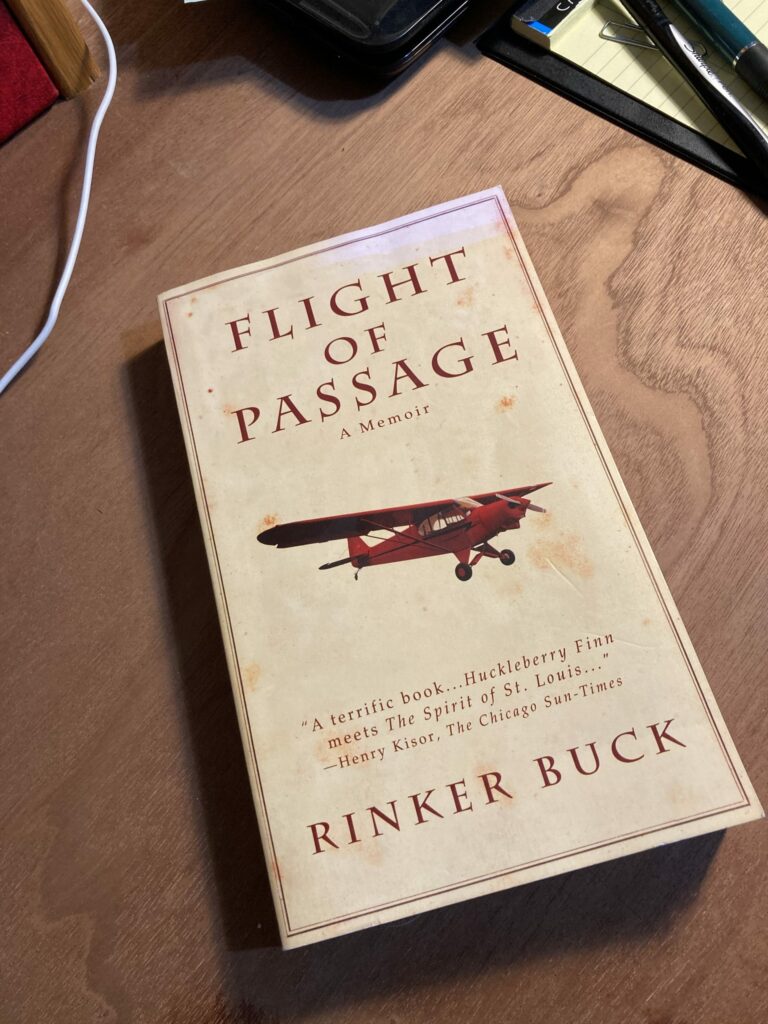
A great book…well worth a read.

